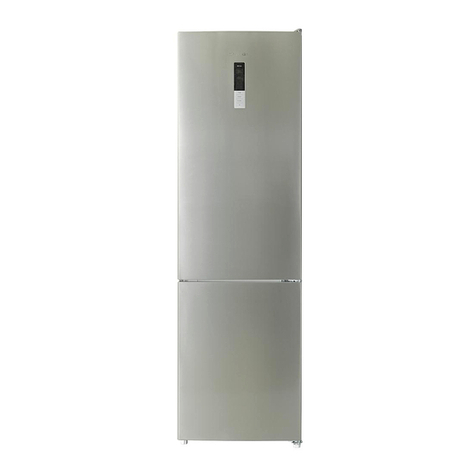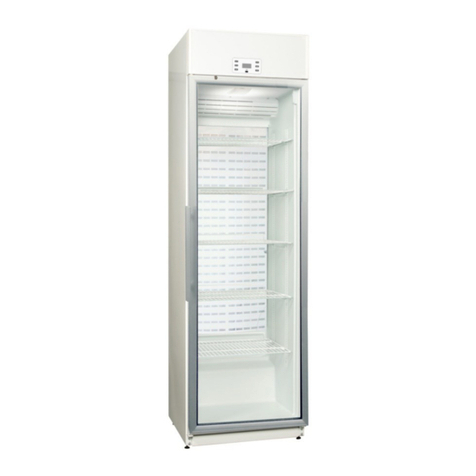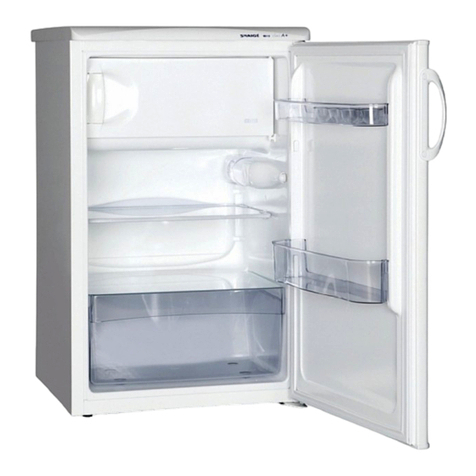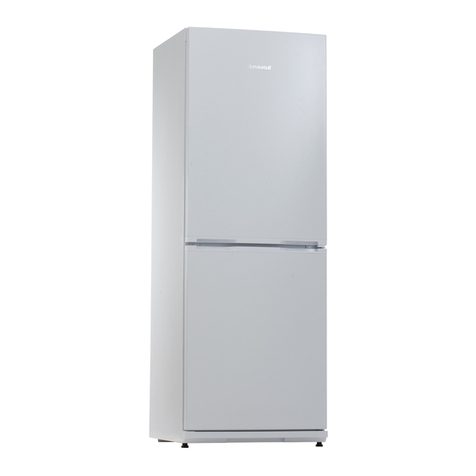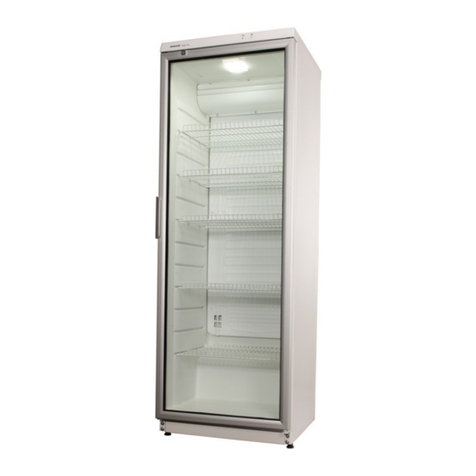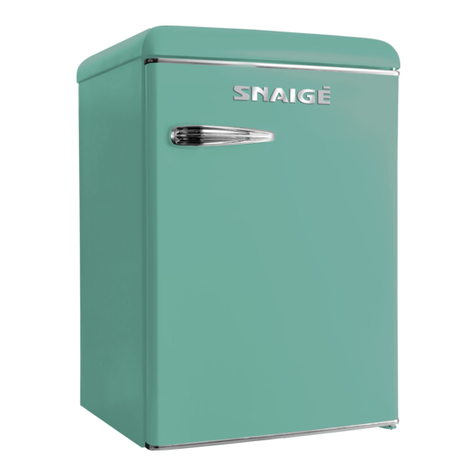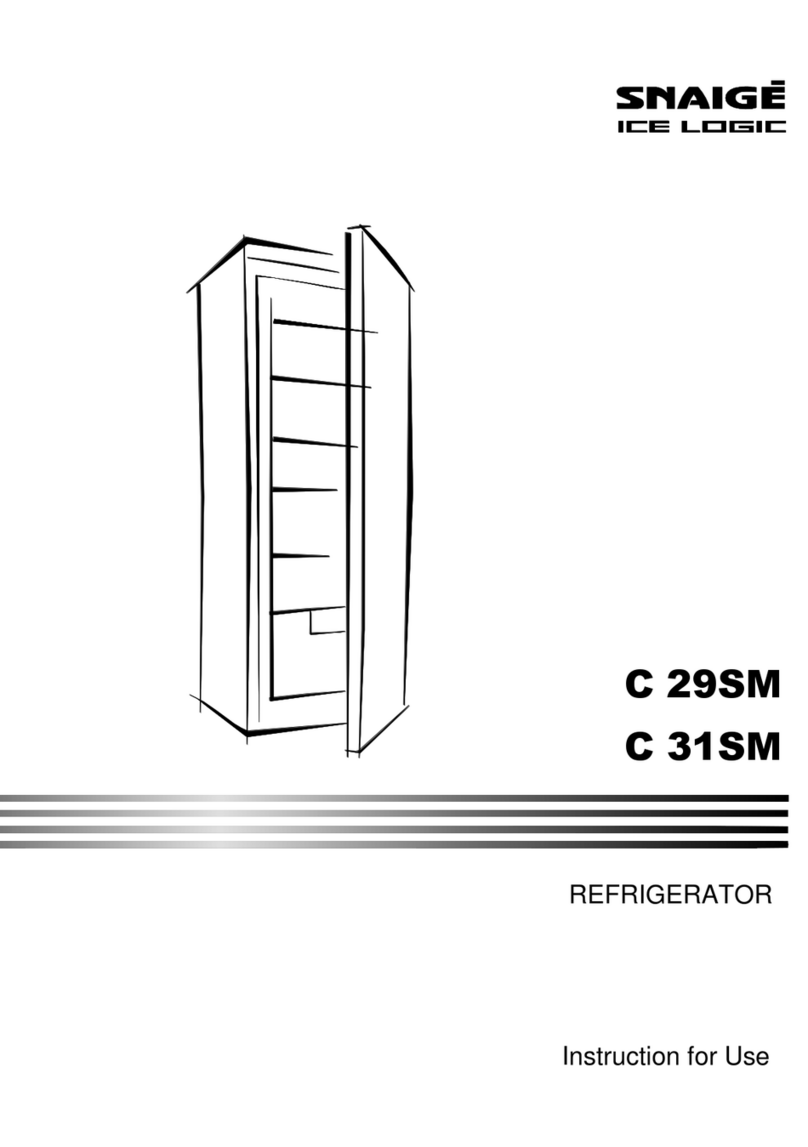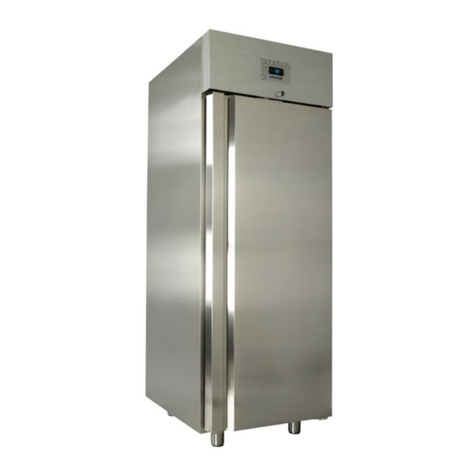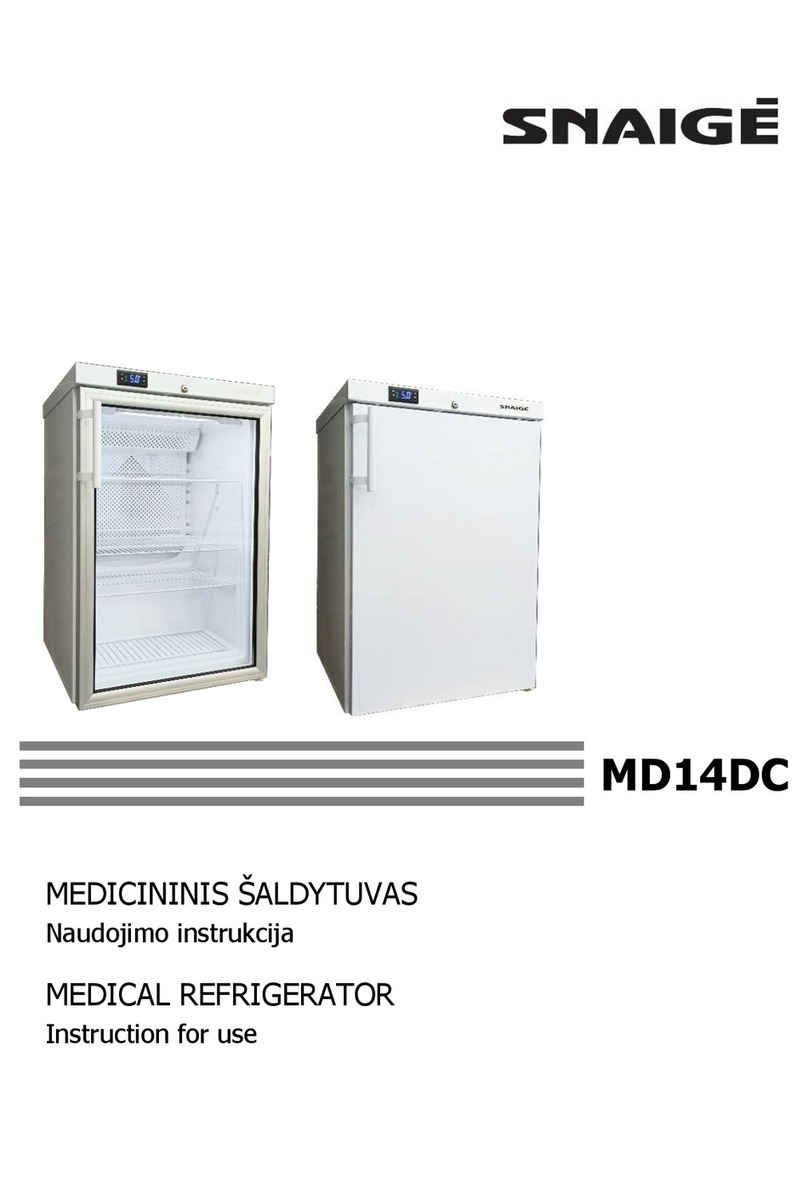
4
INSTALLATION AND OPERATING CONDITIONS
Positioning:
•This appliance can be installed in a dry, well ventilated indoor where the ambient
temperature corresponds to the climate class indicated on the rating plate of the
appliance
WARNING! The appliance should not be operated in an unheated room or
porch. Place the appliance away from heat sources such as kitchen
stove/oven, radiators, or direct sunlight.
The rear wall of the appliance, in particular, the condenser and other
elements of the cooling system must not contact other elements, which may
damage them, (e.g. central heating pipes and the water supply pipes).
•Do not cover the ventilation holes at the top of the appliance –it must be a good air
circulation around the appliance. There should be a gap of at least 10 cm between the
top of the appliance body and any furniture that may be above it. If this requirement is
not followed, the appliance consumes more electrical energy and its compressor may
overheat.
•If the appliance is placed in a corner, a gap
of at least 3 cm must be left between the
appliance body and the wall. Overall space
required for use of the refrigerator.
Overall dimensions for installation of
the refrigerator (see fig.).
•The appliance must stand on a level surface
and must not touch the wall. If necessary,
regulate the height of the appliance by
adjusting the levelling feet: by turning them
clockwise –the front of the appliance rises,
by turning them counter clockwise –it
comes down. If the appliance is tilted
slightly backward –the doors will close by
themselves.
Preparing the appliance for operation:
It is recommended to prepare the appliance for operation with a helper.
•The device must only be transported in its vertical position; do not tilt any more than
30°.
•Remove boards of foamed polystyrene from the top and the bottom of the appliance.
They are intended for transportation only. Remove adhesive tapes and open the door. In
case of moving the appliance to another place, lift its front in such a way that its
supports couldn’t touch the floor.
Take out the plug with the supply cord 10 from the water tray 11 (see page 6, fig.
1) which is placed under a compressor (this is intended for transportation only.
When the appliance is running, the cord can’t be in the tray. The appliance
should not be connected to the mains until all packing and transport materials
aren’t removed.
